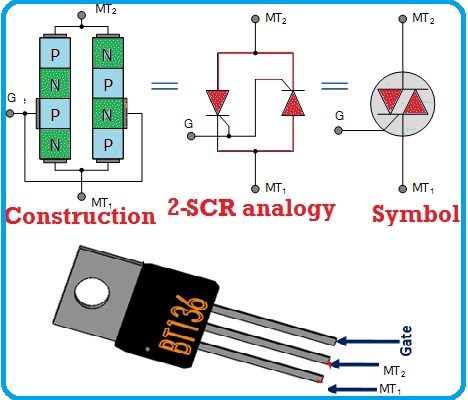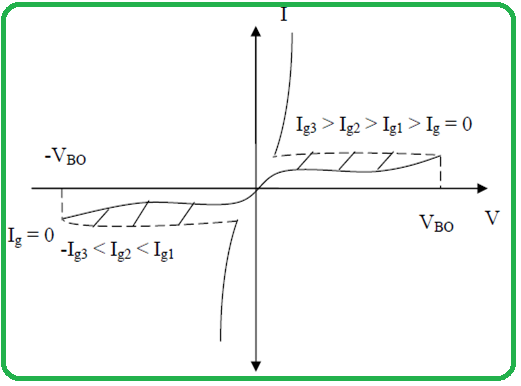
What is TRIAC-TRIode for AC?
Tuesday, April 21, 2020
Edit
TRIAC-
TRIAC is used to control AC voltage, in applications like electric range heating controls, light dimmers, and small motors etc. TRIAC is a bidirectional device.
· Like the SCR, the TRIAC latches after triggering and turns off when the current is below the holding current(IH), which happens at the end of each alteration.
•The TRIAC belongs to the thyristor family.It can conduct in both directions.
• Thus a TRIAC is similar to two back to back (anti parallel) connected thyristors but with only three terminals.
• The three terminals are marked as MT1 (Main Terminal 1), MT2 (Main Terminal 2) and the gate terminal by G.
•When the voltage on the MT1 terminal is positive with respect to MT2, a gate current pulse will cause the left SCR to conduct. On reversing the anode voltages, the gate current pulse causes the 2nd (right) SCR to conduct.
V-I Characteristics of TRIAC
•In TRIAC two SCRs are connected in anti parallel.
•Therefore, the V-I characteristics of TRIAC in the 1st and 3rd quadrant, will be similar to the forward characteristics of a thyristors.
•TRIAC conducts in both direction hence it is a bidirectional device and can have its terminals at various combinations of positive and negative voltages.
There are four possible electrode potential combinations as given below :-
There are four possible electrode potential combinations as given below :-
– MT2 and Gate terminal are positive with respect to MT1.
– MT2 positive with respect to MT1 but Gate terminal is negative with respect to MT1.
– MT2 and Gate terminal are negative with respect to MT1.
–MT2 negative with respect to MT1 but Gate terminal is positive with respect to MT1.
 |
| VI-Charecteristics of TRIAC |



